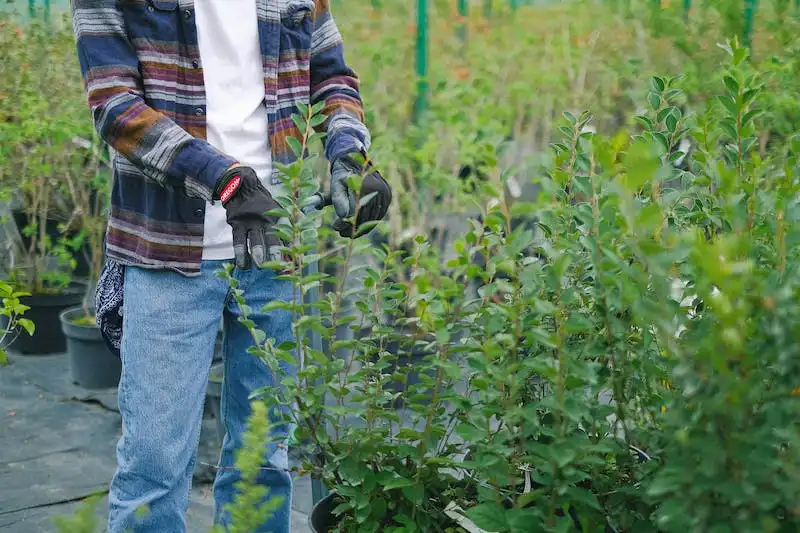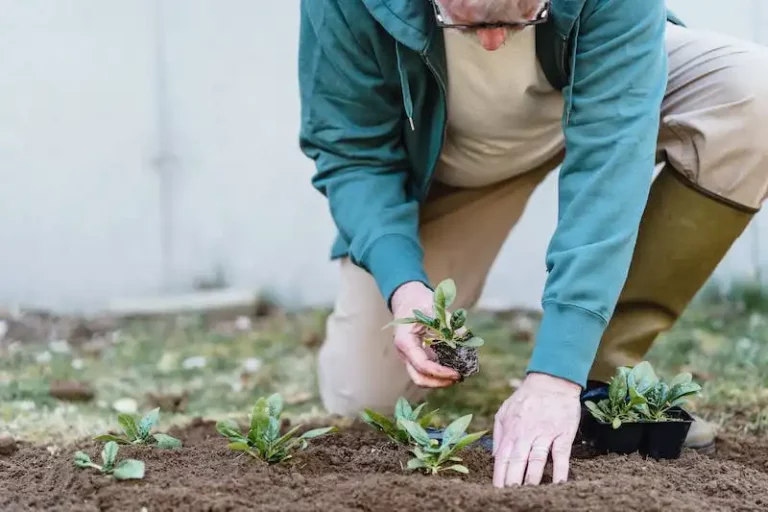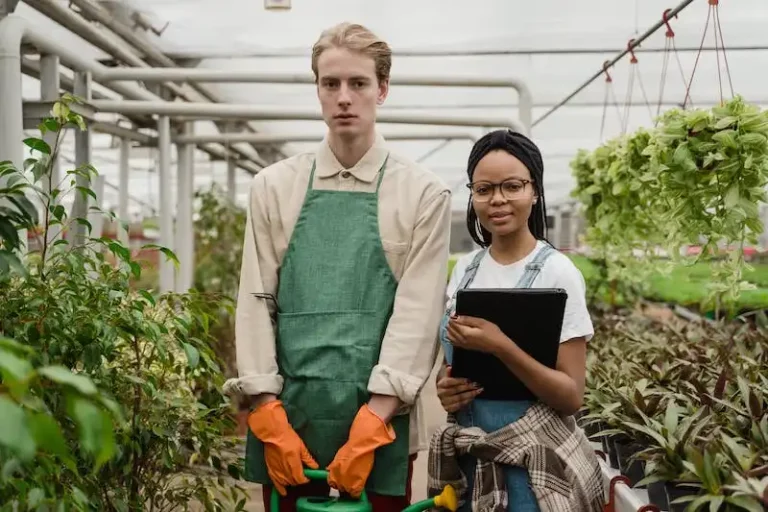If you’re looking for a plant that requires minimal care and brings vibrant colors to your indoor space, kalanchoe is a perfect choice. With its ability to thrive in various conditions, this slow-growing plant is favored by many plant enthusiasts. So, if you’re ready to learn more about caring for kalanchoe—and how to get it to bloom—read on!
Kalanchoe, scientifically known as Kalanchoe blossfeldiana, is a flowering succulent that belongs to the Crassulaceae family. Native to Madagascar, it has become a popular houseplant worldwide due to its beautiful blooms and low maintenance requirements. Kalanchoe plants are prized for their glossy leaves and clusters of tiny, colorful flowers that can last for several weeks.
When it comes to caring for kalanchoe, one of the most important factors to consider is the temperature. These plants prefer temperatures between 60 and 85 degrees Fahrenheit (15-29 degrees Celsius) and are sensitive to cold drafts. They can be grown both indoors and outdoors, but it’s important to bring them inside when the temperature drops below 50 degrees Fahrenheit (10 degrees Celsius).
Kalanchoe plants are also known for their ability to easily root, making them great candidates for propagation. You can create new plants by taking stem cuttings or by using plantlets that grow from the mother plant. Once root formation has occurred, the new plants can be potted and cared for individually.
In terms of watering, kalanchoe plants prefer to be kept on the drier side. Overwatering is a common problem, so it’s important to allow the top inch (2.5 cm) of soil to dry out before watering again. During the summer months, when the plant is actively growing, you may need to water more frequently, but always be sure to check the soil moisture before watering.
Fertilizing kalanchoe plants is also important for their overall health and blooming. A balanced fertilizer can be applied every two weeks during the growing season, but be careful not to over-fertilize, as this can lead to leggy growth and reduced flower production.
In terms of pruning, kalanchoe plants typically do not require extensive pruning. However, you can remove deadheading flowers to encourage new blooms and maintain the plant’s appearance. Pruning can also be done to control the plant’s size and shape.
Overall, kalanchoe is a versatile plant that can bring a splash of color to any indoor space. Whether you’re a beginner or an experienced plant lover, this plant is sure to thrive with minimal care. So, if you’re looking to add a touch of beauty to your home, consider getting a kalanchoe plant!
Source: The Spruce
Kalanchoe
Kalanchoe is a popular plant for those who love succulents. It is relatively easy to care for and makes a beautiful addition to any landscape. To germinate Kalanchoe, you can use cuttings or seeds. However, many people prefer to use cuttings because they have a higher success rate.
One common problem with Kalanchoe is that it is a fragile plant. The leaves of the mother-of-thousands are especially prone to damage. To prevent this, be careful when watering the plant. Water the Kalanchoe sparingly and avoid getting water on the leaves. It is also important to use a well-draining potting mix to prevent over-watering.
Another issue that gardeners often encounter with Kalanchoe is the cycle of blooming and rest. During the summer months, the Kalanchoe may stop blooming and go into a period of rest. This is completely normal and nothing to be concerned about. If you have any questions about your Kalanchoe’s blooming cycle, you can always ask a botanic expert.
Deadheading can help prolong the blooming period of your Kalanchoe. Remove any spent flowers to encourage the plant to produce new ones. This will keep your Kalanchoe looking showy and vibrant.
Kalanchoe plants are known by many names, including mother-of-thousands and chandelier plant. They are native to Madagascar and are often used as houseplants or in outdoor landscapes. The leaves of the Kalanchoe are thick and fleshy, with scalloped or serrated edges.
If your Kalanchoe is looking drab, it may be due to lack of light. These plants thrive in bright, indirect light, so placing them near a sunny window or under a grow light can help revive them.
When it comes to fertilizing your Kalanchoe, it is best to use a well-balanced fertilizer. Be cautious not to over-fertilize, as this can cause the plant to produce more leaves than flowers.
Propagating Kalanchoe is relatively easy. You can take cuttings from the parent plant and place them in a well-draining potting mix. With proper care, these cuttings will begin to grow roots and new plantlets.
Kalanchoe flowers are typically small and form in clusters. They come in a variety of colors, including red, pink, yellow, and orange. When the flowers begin to fade, simply remove them to keep the plant looking neat and tidy.
Like many plants, Kalanchoe is susceptible to pests, such as scale insects. To prevent an infestation, regularly check your plants for any signs of pests and take action immediately if you find any. Additionally, allowing the soil to dry out between waterings can help prevent root rot and other diseases.
In conclusion, Kalanchoe is a beautiful and versatile plant that can thrive both indoors and outdoors. With a little effort and proper care, you can enjoy the showy flowers and unique foliage of this plant year-round.
kalanchoe
Kalanchoe is a common plant in the succulent family, often grown for its beautiful clusters of tiny, colorful flowers. It is a herbaceous plant that can be found in a variety of styles, including variegated and felt-like leaves.
One of the most common types of Kalanchoe is Kalanchoe blossfeldiana, which is often used by florists for its vibrant blooms. This plant requires a lot of sunlight and should be placed in a sunny window or outside. However, be careful not to overwater it, as Kalanchoe is a succulent and doesn’t require as much moisture as other plants.
Kalanchoe tomentosa, also known as “panda plant,” is another popular variety. It has soft, fuzzy leaves and is quite easy to care for. It can tolerate a little bit of shade and should be watered once the soil has completely dried out.
Kalanchoe daigremontiana, also known as “mother of thousands,” is a unique variety that reproduces by growing plantlets on the edges of its leaves. These plantlets can be easily removed and planted elsewhere to start new Kalanchoe plants.
When caring for Kalanchoe plants, it’s important to select the right pot and soil. Most Kalanchoe plants prefer well-draining soil and should be planted in a pot with drainage holes. They are usually quite drought-tolerant and don’t require a lot of fertilizer. However, a balanced fertilizer can be used once a month during the growing season to promote healthy growth.
Kalanchoe plants have relatively low water requirements. They should be watered thoroughly, allowing excess water to drain out of the pot, and then left to dry out between waterings. Overwatering can lead to root rot and other diseases.
Kalanchoe plants can be grown both indoors and outdoors. When grown indoors, they make lovely houseplants and can be used to add a touch of color to any room. Outside, they can be used in landscapes and gardens to create interesting focal points.
In the fall, when temperatures start to drop, it’s important to bring Kalanchoe plants inside, as they are sensitive to cold and can be easily damaged or killed. They should be kept in a warm, sunny location and protected from drafts.
In summary, Kalanchoe is a popular plant for its vibrant blooms and easy care. It is a succulent plant that requires a lot of sunlight and minimal watering. With the right care and attention, Kalanchoe can be a beautiful addition to any home or garden.
Physical description
Kalanchoes are a great addition to any indoor garden due to their stunning physical appearance and easy care. They are herbaceous plants that belong to the family Crassulaceae, commonly known as the stonecrop family. The name “Kalanchoe” comes from the Chinese words “kalang chi,” which roughly translates to “that which falls and grows.” This name is fitting as Kalanchoes have the ability to get propagated from fallen leaves, making them an ideal plant for propagation.
Kalanchoes come in various types, each with its own unique physical characteristics. One popular type is Kalanchoe pinnata, also known as the “Chandelier Plant” due to its cascading style of growth. This plant has long, serrated leaves with scalloped margins that give it an interesting and visually appealing look.
Another well-known type is Kalanchoe thyrsiflora, also called the “Flapjack Plant” or “Paddle Plant.” This plant has thick, paddle-like leaves with red margins that resemble the flaps of a pancake. The leaves of Kalanchoe thyrsiflora turn vibrant shades of red or copper when exposed to bright sunlight.
Kalanchoe blooms are another major attraction of these plants. They produce clusters of small, vibrant flowers in colors such as red, orange, yellow, and pink. The flowers bloom in winter, making Kalanchoes a perfect choice for adding color and life to your indoor space during the colder months.
When it comes to care, Kalanchoes are relatively easy to maintain. They prefer bright, indirect sunlight and moderate temperatures between 60 to 85 degrees Fahrenheit. Overwatering can lead to problems, so it’s important to let the soil dry out between waterings. Kalanchoes also love humidity, so regular misting can help prevent wilting. Fertilizing once a month during the growing season is recommended to promote healthy growth.
Overall, Kalanchoes are beautiful houseplants that can thrive indoors with minimal care. Their unique physical features and vibrant blooms make them a popular choice among plant enthusiasts. Whether you choose the chandelier-style Kalanchoe pinnata or the paddle-shaped Kalanchoe thyrsiflora, you’ll definitely spruce up your indoor space with these captivating plants.




